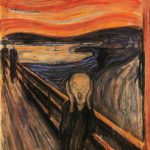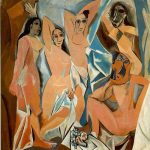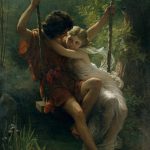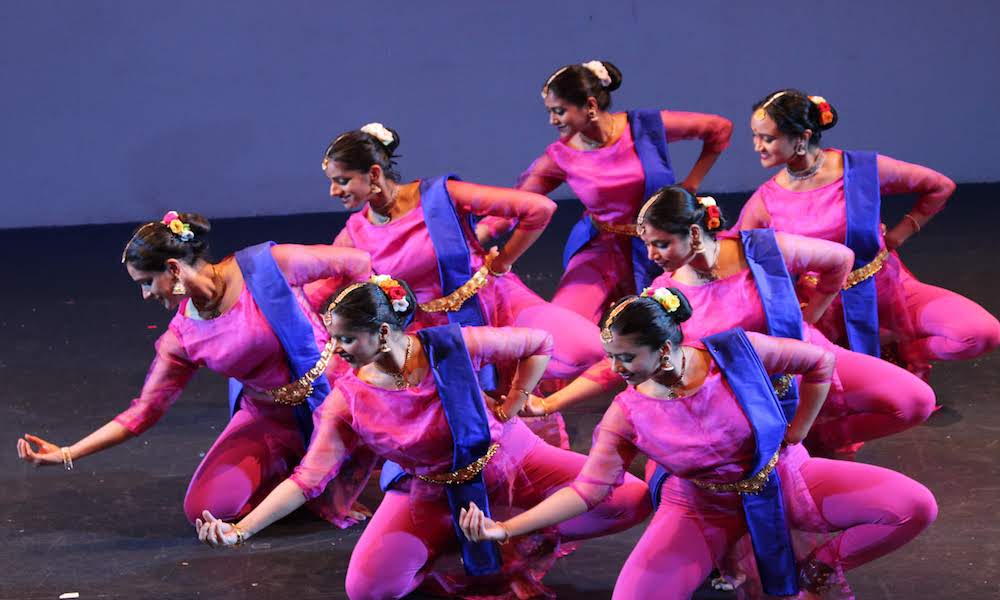
As a trained Bharatanatyam dancer, there are certain preconceived notions and expectations I possess about how the dance form should be executed. While I am a “purist” or “traditionalist” at heart, I can never pass up the opportunity to see Indian classical dance performed in new and creative ways. As such, I was beyond excited to make a trip to Dixon Place in New York City a few weeks ago to watch Aalokam Dance Company’s production “Pratyaksha: Painting with Dance.”
[Read Related: Ameya Performing Arts Performs Empowering Dance Show About Women in Michigan]
Billed as “a traditional repertoire with external inspirations,” “Pratyaksha,” meaning “perspective” in Sanskrit, was a foray into exploring how Bharatanatyam may be used to depict western art movements and art forms including cubism, impressionism and romanticism, among others. Drawing inspiration from paintings like the ones seen below, “Pratyaksha”‘s mission was to stay true to the basic techniques of the dance form and follow the traditional repertoire of Bharatnatyam‘s 5 core pieces while infusing innovative choreography to mimic its modern influences.
Alaripu, the first piece, usually focuses purely on rhythm. Meant to be inspired by cubism for the production, this piece was reimagined by breaking down movements into their essential parts, from just the footwork, to the hand movements, to the bols. I was pleasantly surprised by how well this was done, and could easily understand the nod to cubism in the piece through the distinct steps that ultimately culminated in cohesive movements.
Following this was Jathiswaram, a dance that weaves intricate patterns in movement based on repetitive musical rhythms, much like the short thin brushstrokes that form impressionist paintings. What made this Jathiswaram reflective of impressionism was that it captured the passage of time through stage lighting that mimicked a day from sunrise to sunset, as seen in the “Sunset in Venice” painting by Monet. Yet, there was not much in the choreography itself that made it “impressionistic,” so I was left wanting a bit more.

Varnam, the next piece, is the highlight and the most lengthy piece of a Bharatanatyam repertoire. It is a combination of rhythm, melody and expression. Aalokam’s version strived to bring romanticism (in the artistic sense of the word) to life by playing on the transcendental and emotional nature of such works, and met the bar through the rigor of the choreography and stamina of the dancers. However, the comprehension of the connection between the choreography and its representation of romanticism was perhaps too complex for some. Additionally, having one of the dancers speak only certain jathis in the middle of the piece but then trail off in the middle of the recitation was distracting and strange, as this does not normally happen in live Bharatanatyam performances.
Following the intense Varnam were two back-to-back Padams meant to emulate expressionism. The first was a calm and emotional piece that explored anticipation, yearning and disappointment as a woman waited for her lover, while the second delved into anger, arrogance and apathy. The performers did a beautiful job of depicting emotions through their gestures and facial expressions, but again, the concept of having a dancer do simplistic, abstract movements in the background while the main dance happened in the foreground was lost on me.
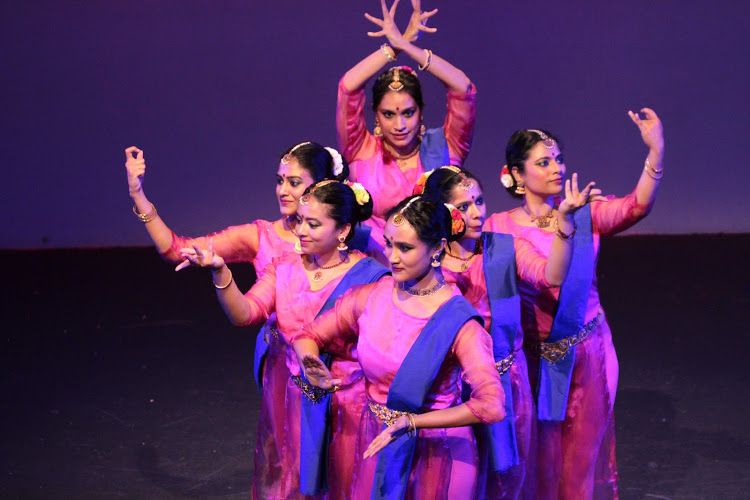
The final piece, Thillana, was indeed a celebration of joy, liberation and color as a reference to abstract expressionism. Despite having danced for nearly 90 minutes straight, the dancers’ energy and dynamic movements throughout this piece were truly commendable. Even though I found it very odd that the dancers were not wearing ghungroos for a piece that emphasizes complicated footwork and despite having worn them for the rest of the show, this minor flaw was remedied by a wonderful surprise: each of the dancers had a different color of paint covering the palms of their hands for this piece, resulting in a perfect ending for the theme of the show.
Overall, “Pratyaksha” was definitely a visual treat and a clever, out-of-the-box production. Once again, while straying too far from comfort and tradition is not usually my cup of tea, I thoroughly enjoyed the innovative choreography, passion and cross-cultural blend of “east meets west.” Aalokam could certainly work on execution, both in its ideas and developing the dancers as performers, as the different styles and techniques the dancers were trained in were evident and the memory of the steps was an issue at times, as well. Regardless, the live music was brilliant and heightened the experience. I cannot wait to see where the company goes from here and what it comes up with for its next production!

